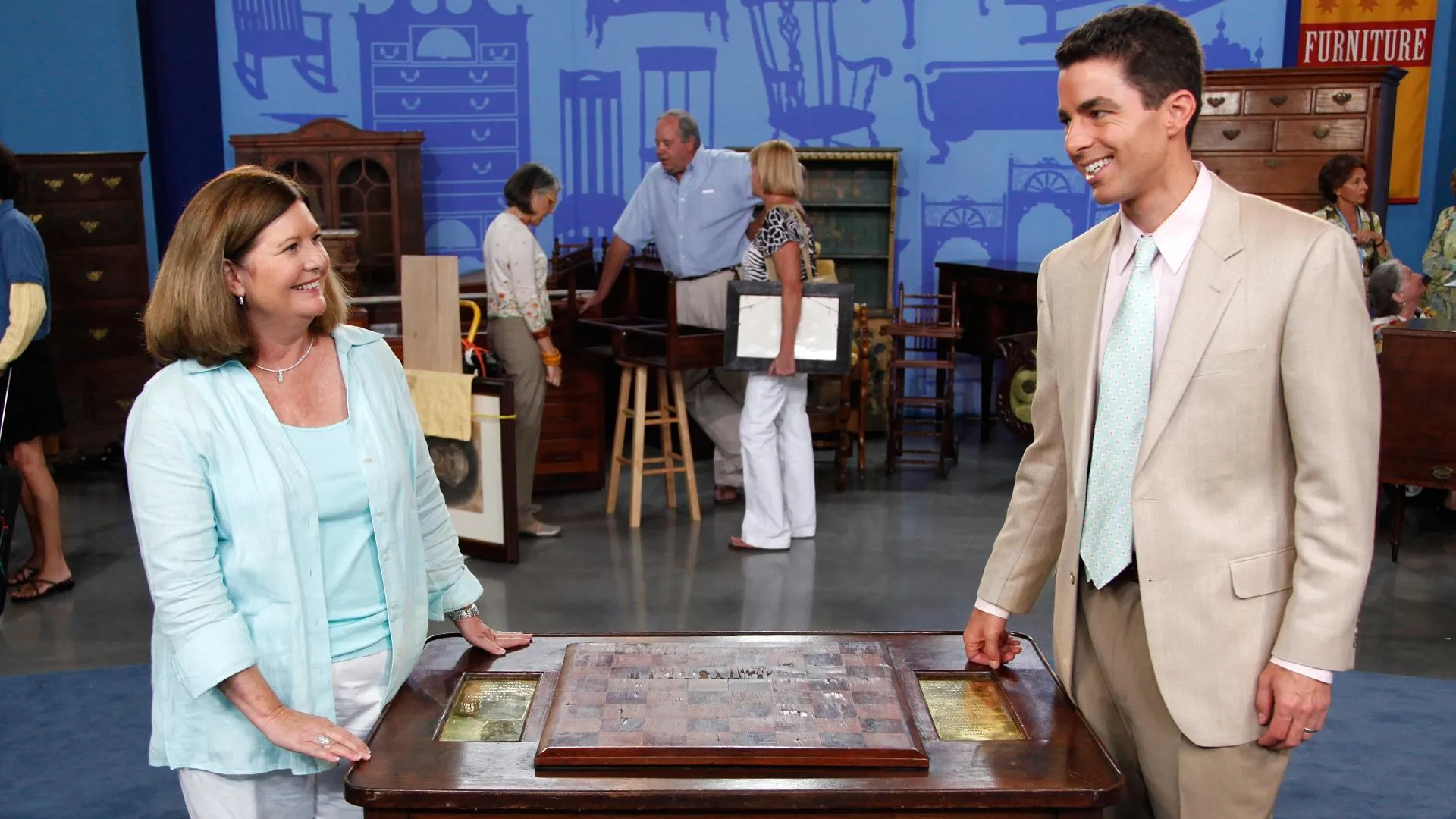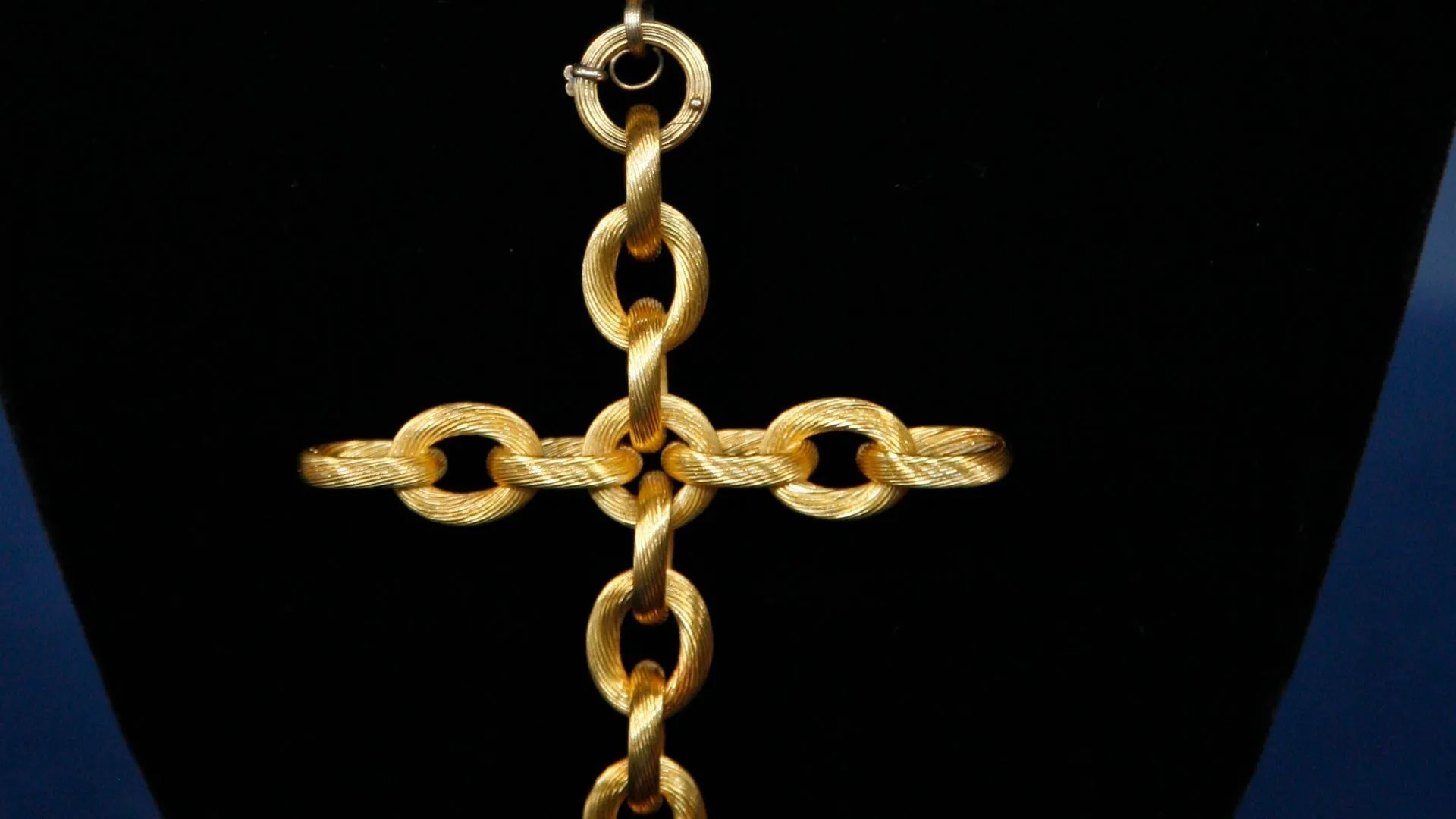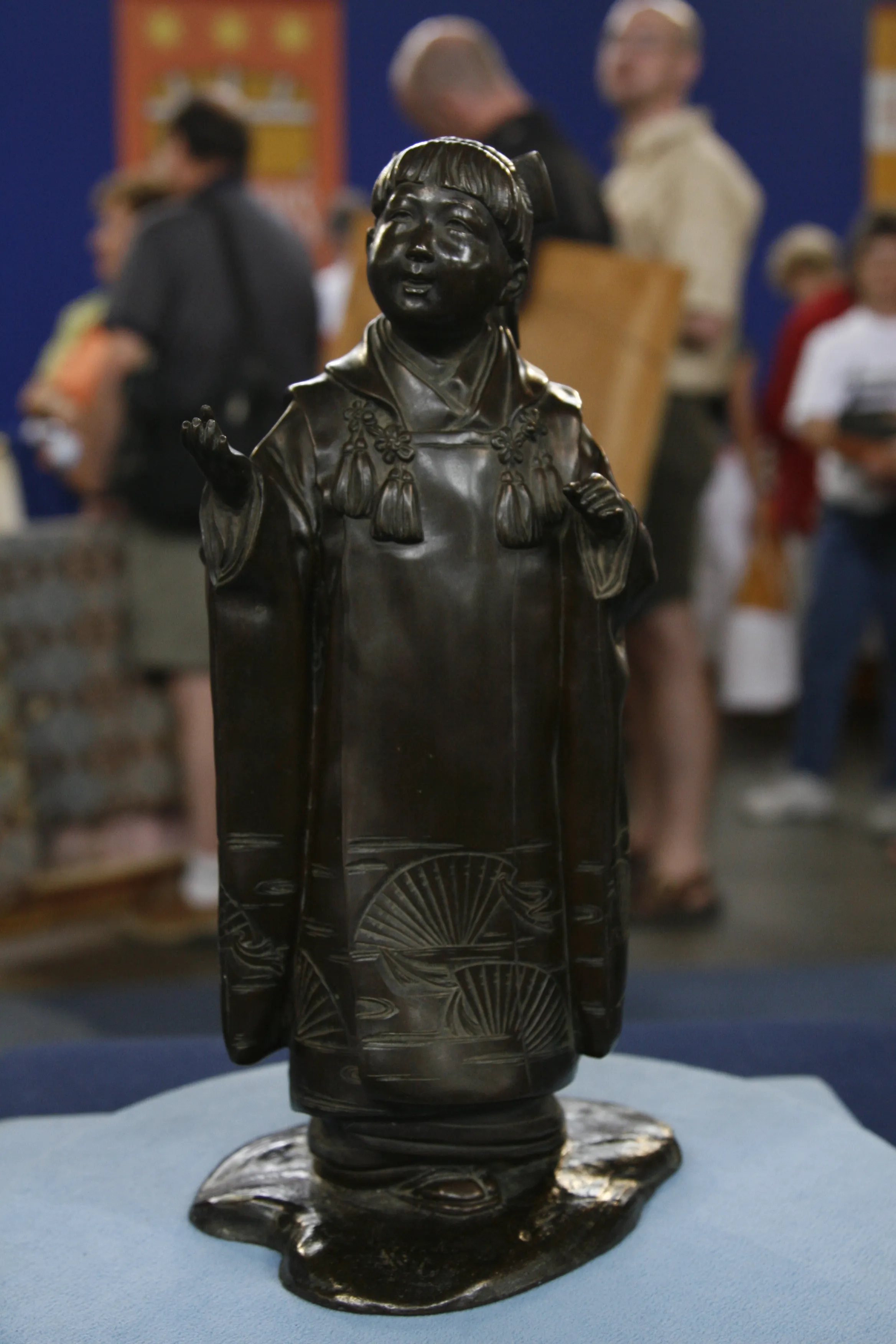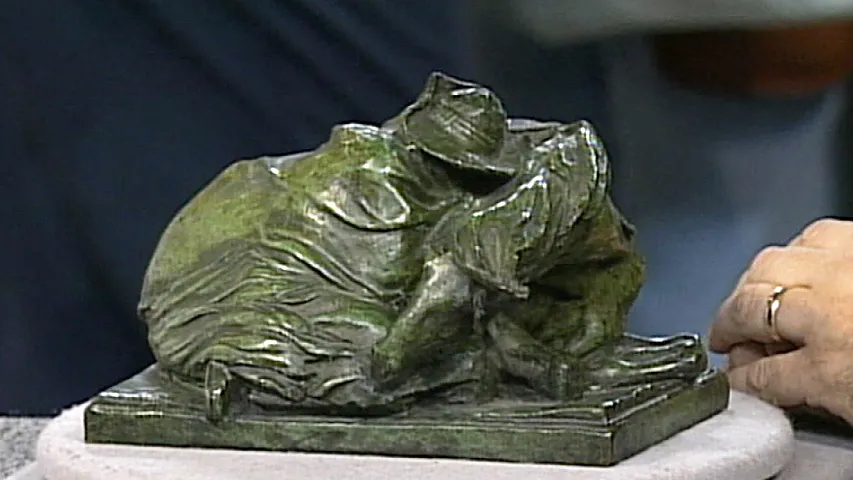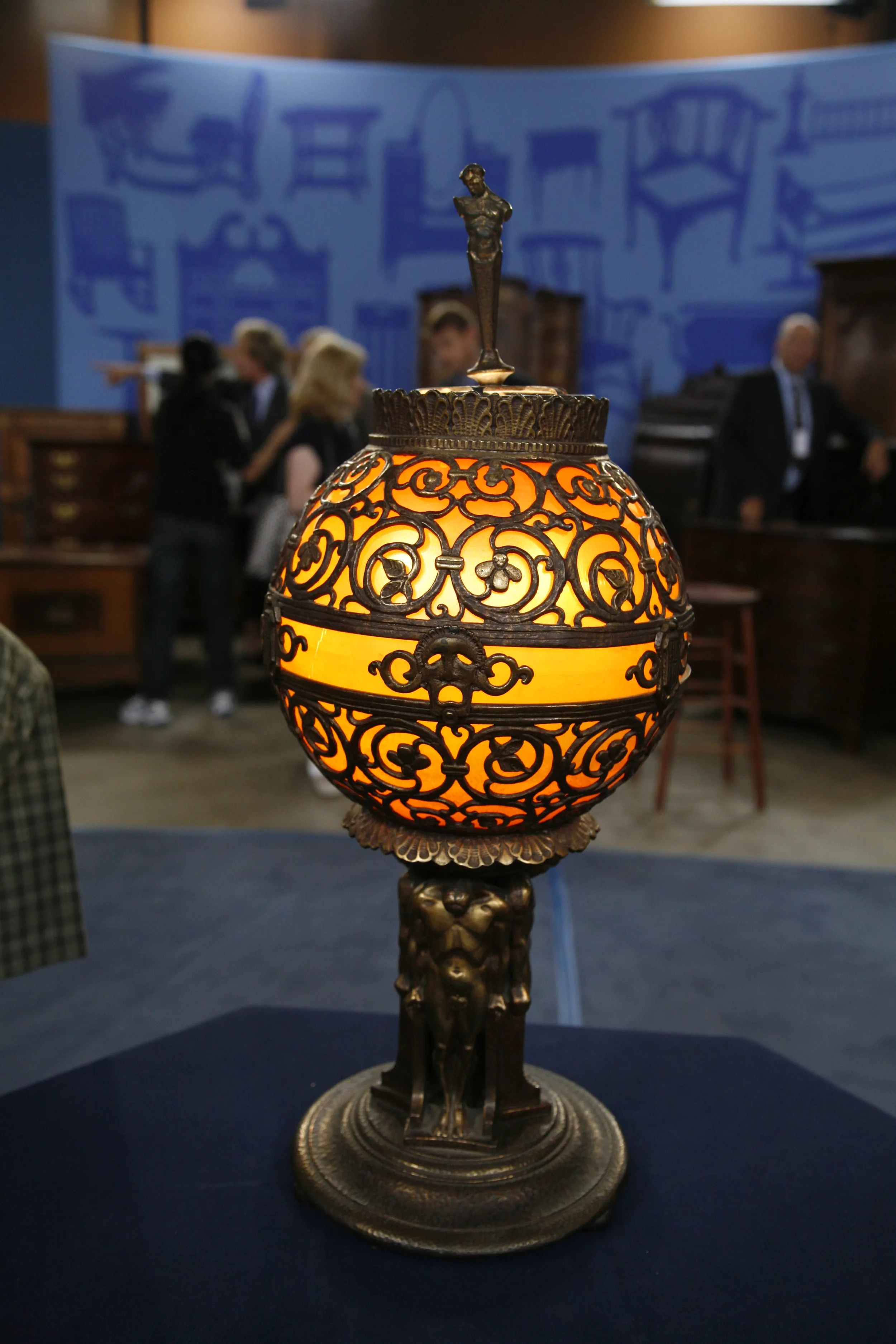GUEST: Well, I brought in this urn that my father got from a friend of his. The story goes, my father's friend brought this home from France after the war. Supposedly, it had been shot in several places. And he was just downsizing and gave it to my father, who was also over there in France. And we've had it for about 40 years now.
APPRAISER: What we've got here is a decorative urn that was probably manufactured in France from an English stone. This stone that we've got here is typically called Blue John, which a lot of people haven't heard of.
GUEST: No.
APPRAISER: Largely because it was mined in England.
GUEST: Oh.
APPRAISER: And now the deposits of Blue John are pretty much gone.
GUEST: Oh, really?
APPRAISER: Because it was so popular, that they went in and took out everything that there was to be had, practically.
GUEST: Really?
APPRAISER: And you can see the striations of color throughout the body of it. It sort of looks like amethyst.
GUEST: Um... Which is what we thought it was.
APPRAISER: Yeah, exactly, Blue John, it has a lot of color variety. Sometimes it's more gray or black or blue, hence the name Blue John.
GUEST: Mm-hmm.
APPRAISER: Sometimes it's called Derby Spar.
GUEST: Oh.
APPRAISER: Because it was mined near Derby, England. The mines are still there and they can pull out Blue John from these mines, but in very, very small pieces. Only big enough to make jewelry, really. So what you have here is a really gigantic piece of Blue John.
GUEST: Wow.
APPRAISER: It’s in these gilt-bronze mounts that are very well done. This is a decorative urn. Probably would have been one of a pair. It doesn't open up.
GUEST: No.
APPRAISER: It doesn't do anything but sit there and be pretty. You mentioned that it had been shot.
GUEST: That, that's the story.
APPRAISER: Now, and I think...
GUEST: That's the story.
APPRAISER: If we turn it around a little bit, we can sort of see that it's had a little bit of a hard life. That's a good war story-- that bullets caused these, these damages. But if we look all down in here, where we have this chunk that's out of it.
GUEST: Mm-hmm.
APPRAISER: Up here, we've got this big hole knocked in it. Could have been bullets. Who knows? Maybe it just had a hard life.
GUEST: Maybe.
APPRAISER: Maybe somebody just knocked it over. It's got these big chunks in this join, which make it a little bit unstable. But it's still a really beautiful thing. And if we look down here...
GUEST: Yes.
APPRAISER: ...we have a mark...
GUEST: Mm-hmm.
APPRAISER: ...that I think is the mark of the retailer. It's Beaudouin-Massin. They may have made it or they may have just been the people who sold it.
GUEST: Okay.
APPRAISER: These pieces of Blue John are very, very collectible. A piece like this in this condition, I'd estimate it conservatively for auction at about $3,000 to $5,000.
GUEST: Really?
APPRAISER: Yeah. And I think...
GUEST: Wow, that's amazing.
APPRAISER: If it were in perfect shape, I think you'd be looking at easily more in the range of $20,000.
GUEST: Oh, my.
APPRAISER: Maybe even more. But it could be restored by someone who works with stone. And do something that would make it look good and be a bit more stable.
GUEST: Yes.
APPRAISER (laughing): The cost might be $500, $1,000 maybe, but when you're looking at enhancing the value of it by at least that much, if not more, it might be something that you want to consider.
GUEST: We will consider that.


